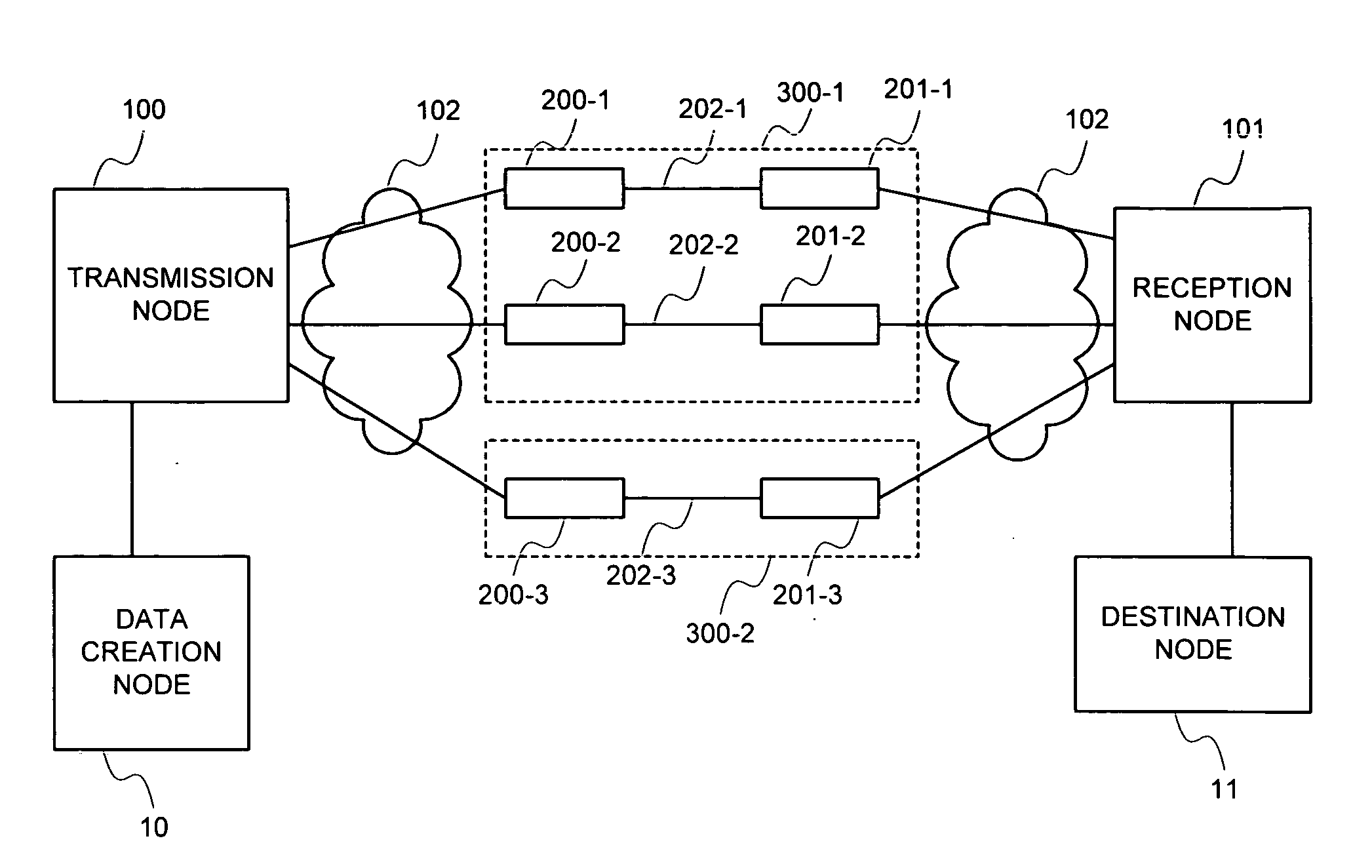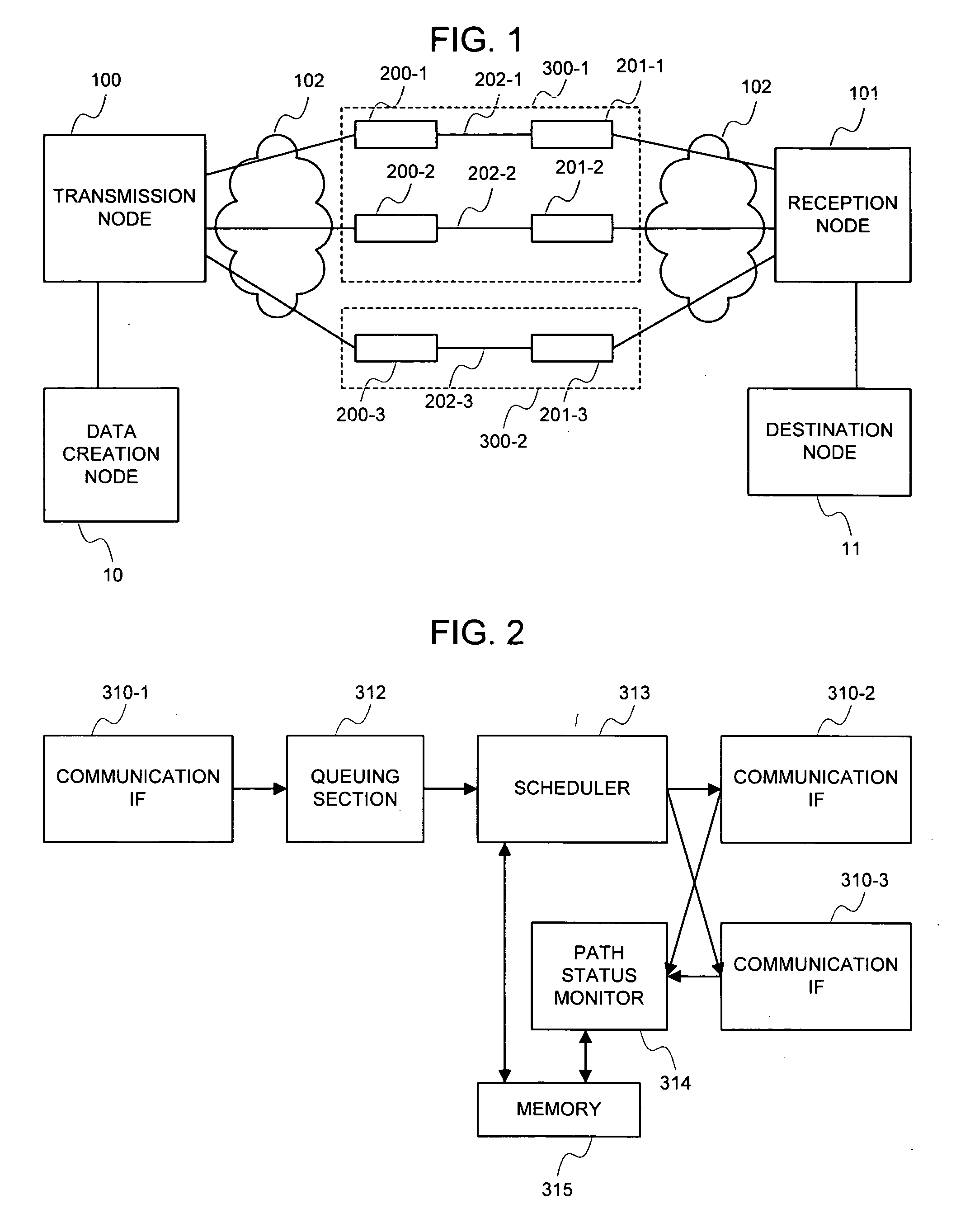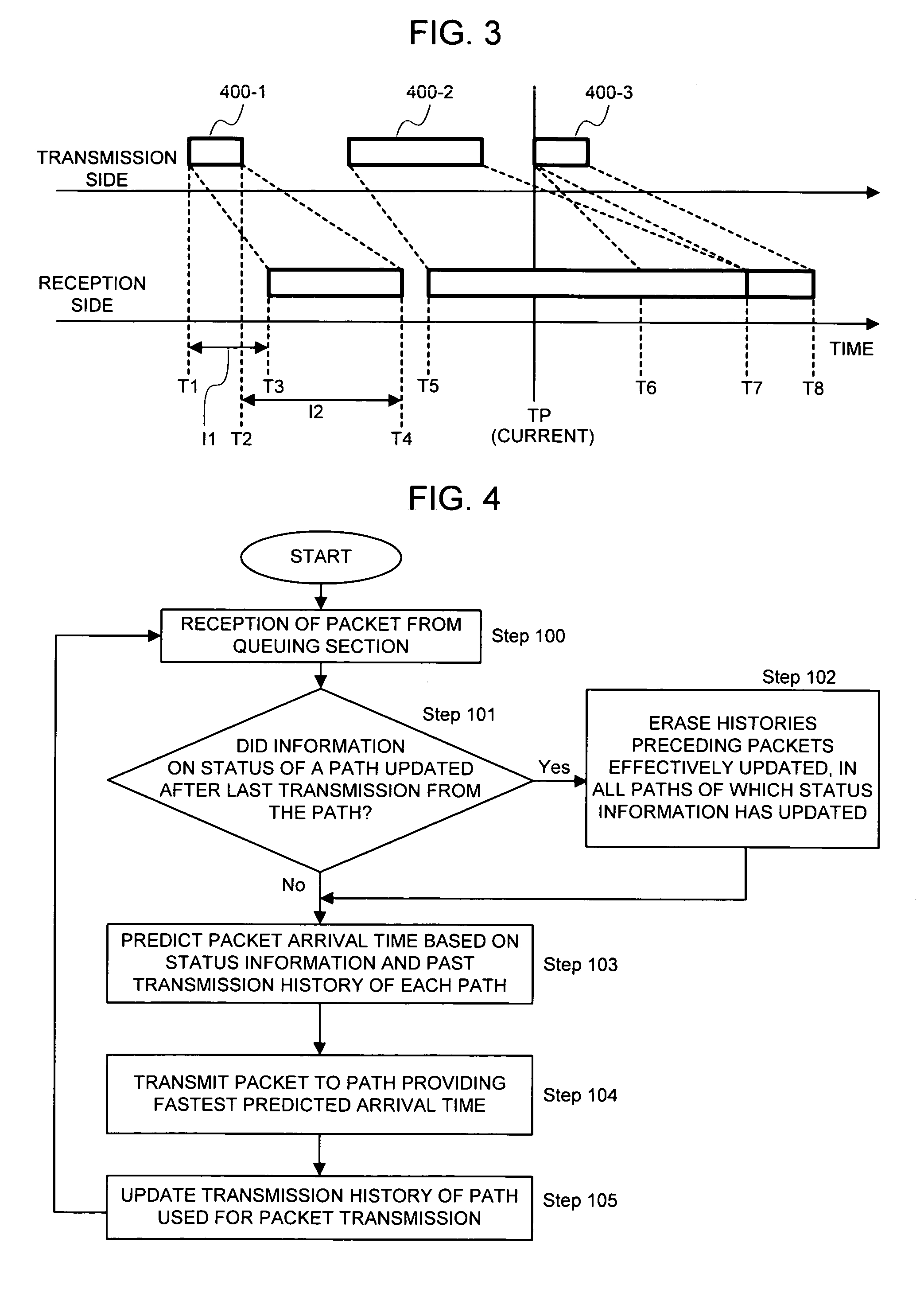Load distributing method
a load distribution and load technology, applied in the field of communication systems, can solve the problem of rate control of the transfer rate between nodes, and achieve the effect of reducing multiplexing efficiency, avoiding multiplexing efficiency, and effectively using path resources
- Summary
- Abstract
- Description
- Claims
- Application Information
AI Technical Summary
Benefits of technology
Problems solved by technology
Method used
Image
Examples
Embodiment Construction
[0114] A best mode for carrying out the present invention will be explained below.
[0115] It is assumed that an aspect of the present invention is applied to the technique combining plural paths, of which the rate as well as the delay vary dynamically, particularly, paths including radio links to construct one logical path. Inverse multiplexing will be explained below as an example of a technique of constructing one logical path through a combination of plural paths.
[0116]FIG. 1 shows a structural example of the present embodiment.
[0117] Referring to FIG. 1, a transmission node 100 and a reception node 101, each implementing inverse multiplexing, exist in a path between a data creation node 10 and a destination node 11. There are three paths between the transmission node 100 and the reception node 101. Radio links 202-1 to 202-3 are respectively in communication paths between radio transmission means 200-1 to 200-3 and radio reception means 201-1 to 201-3. Three paths are shown in...
PUM
 Login to View More
Login to View More Abstract
Description
Claims
Application Information
 Login to View More
Login to View More - R&D
- Intellectual Property
- Life Sciences
- Materials
- Tech Scout
- Unparalleled Data Quality
- Higher Quality Content
- 60% Fewer Hallucinations
Browse by: Latest US Patents, China's latest patents, Technical Efficacy Thesaurus, Application Domain, Technology Topic, Popular Technical Reports.
© 2025 PatSnap. All rights reserved.Legal|Privacy policy|Modern Slavery Act Transparency Statement|Sitemap|About US| Contact US: help@patsnap.com



